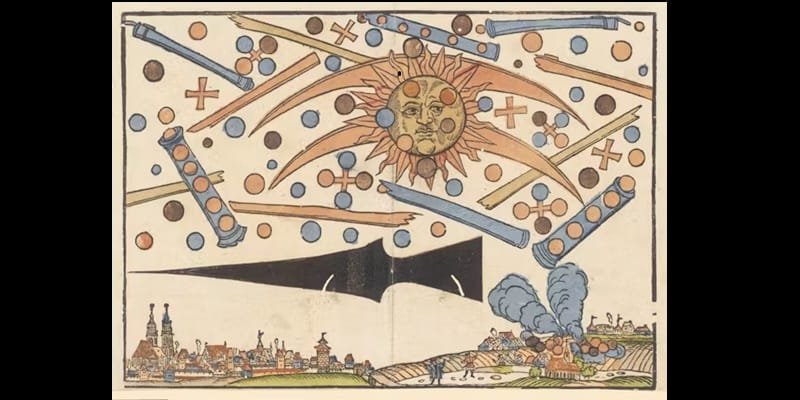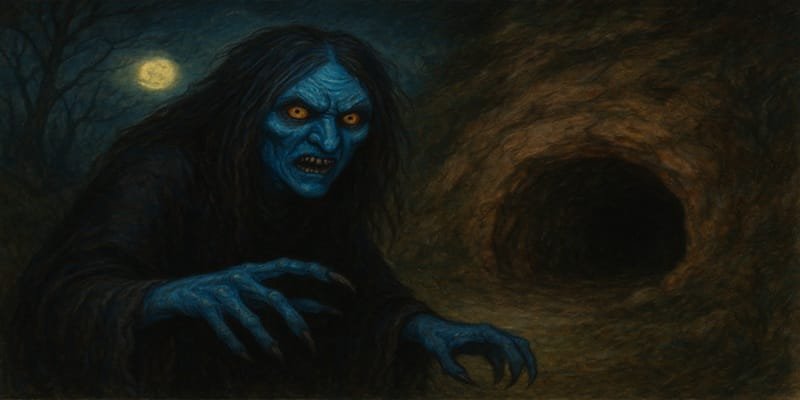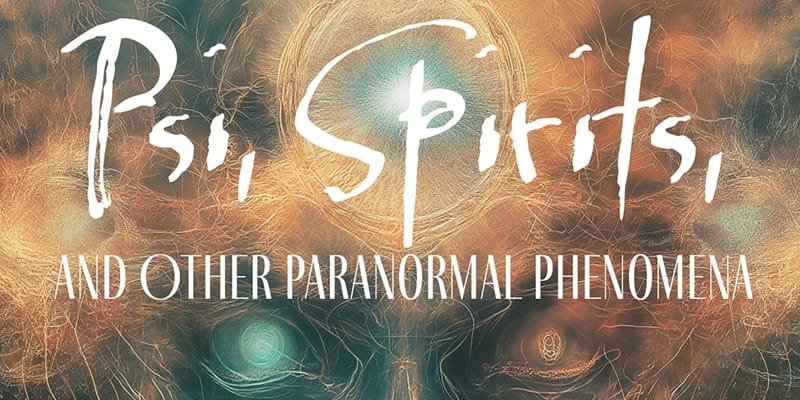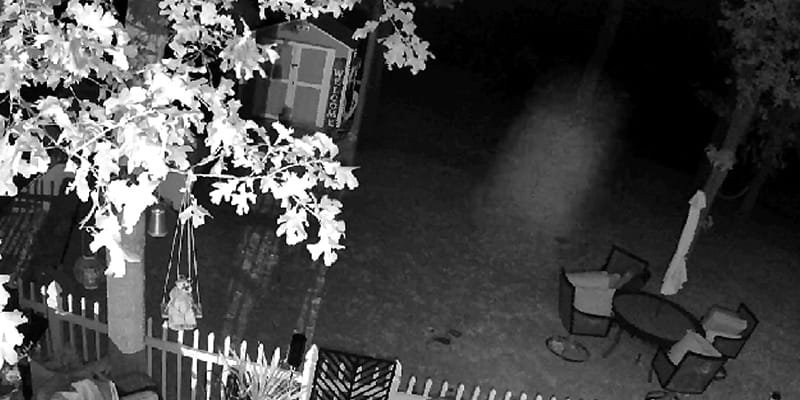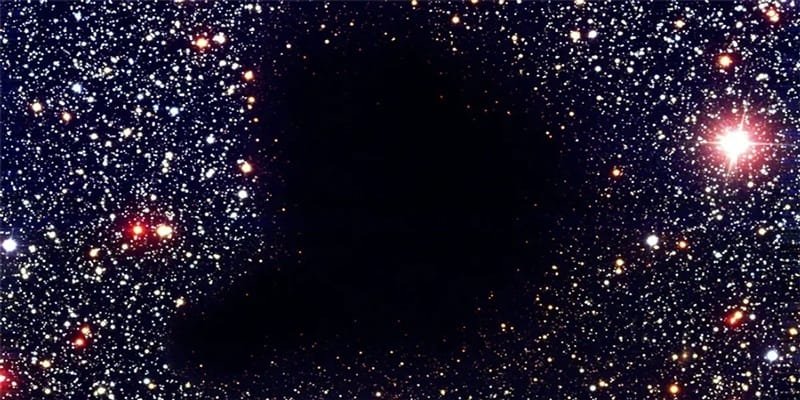The 1561 Nuremberg Sky Battle: From Heavenly Omen to UFO Legend
It began just after dawn on 14 April 1561. The city of Nuremberg stirred in its usual rhythms, bakers lighting fires, merchants opening shutters, when the heavens opened with something far beyond the ordinary. Witnesses later described the sky ablaze with unfamiliar forms: orbs, rods, crosses, and crescents, all seemingly at war above the rooftops. Some fought with violence. Some fell to earth. Others simply vanished. Whether omen, miracle, or madness, the morning spectacle remains one of the most enduring mysteries of early modern Europe.
This was no ordinary event. It left the townspeople unnerved, clergy alert, and printers like Hans Glaser with a story that would echo through centuries. The Nuremberg sky battle has since been adopted by ufologists, dissected by sceptics, and venerated by historians of the strange.
A City Awakes to Chaos in the Sky
In the early hours, a fiery sun rose over Nuremberg, but it shared the sky with much more than light. A flurry of airborne shapes appeared: blood-red and black spheres, long cylindrical tubes, and crosses that seemed to flash and move with will and purpose. According to eyewitnesses, the objects clashed in mid-air, scattered, regrouped, and continued for over an hour in what was described as combat.
At one point, as many as 300 spheres danced and collided. Some emerged from a central sunlike disk. Others launched from what looked like flying rods. The battle ended with the sudden appearance of a large, dark spear-shaped object that loomed ominously above the city.
The skies eventually cleared, but the terror remained. Dozens, perhaps hundreds, of citizens across Nuremberg and its outskirts saw the event. It wasn’t confined to one quarter or class. As one chronicler might have put it, the sky did not discriminate.
Glaser’s Broadsheet: Shock, Symbol, and Sermon
Hans Glaser, a printer and woodcut artist, lived just steps from St. Lorenz Church. Shortly after the event, he published a broadsheet that offered both a woodcut and a written description. The woodcut is now infamous: it shows a sky crowded with rods, globes, crosses, and bursts of light.
In his text, Glaser warned that the spectacle must have been sent by God, “a fearful sign” to provoke repentance. He urged readers to amend their ways, lest the divine displeasure descend in a more permanent form. This was no tale of flying machines or extraterrestrials. For Glaser, it was theology rendered in weather.
Yet even his theological certainty couldn’t mask the surreal nature of the event. The shapes in the sky weren’t symbolic alone; they were described with a level of detail that suggests real observation, not just metaphor.
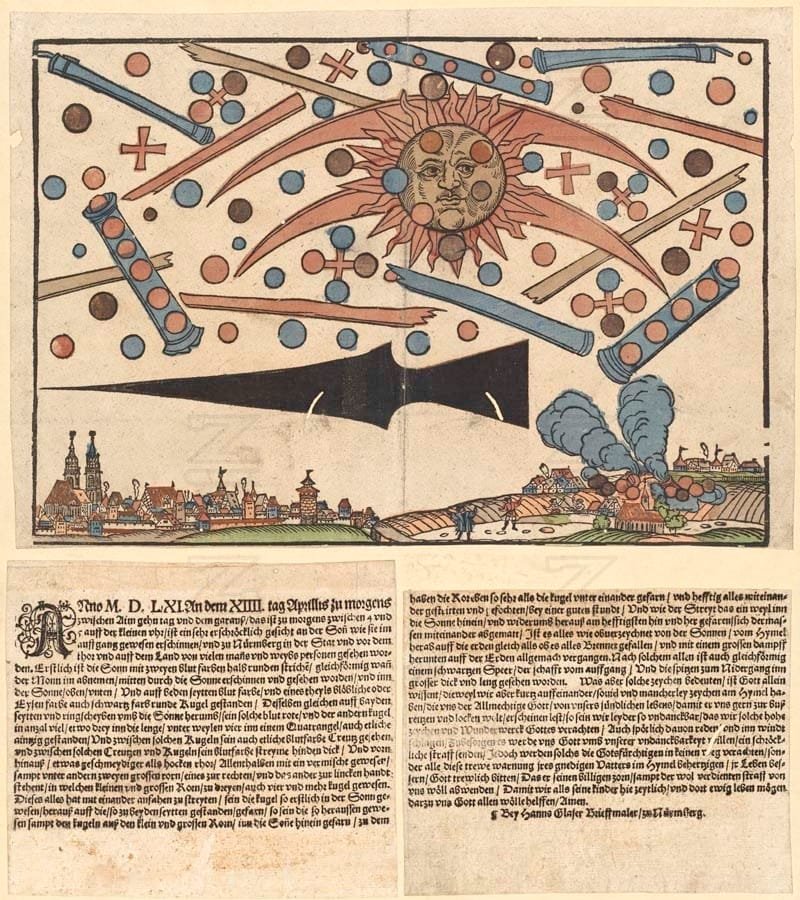
Hans Glaser’s Broadsheet.
A Climate of Signs and Superstitions
The mid-1500s were saturated with signs from heaven. Europe was wracked by religious conflict, plague, and political tension. In Protestant territories like Nuremberg, people lived on edge. The Reformation had loosened old certainties, and anything strange in the sky could be seen as either confirmation or condemnation.
Broadsheets like Glaser’s were the tabloids of their time. They mixed news with commentary and illustration, giving dramatic events a wider reach. Readers looked to the sky, and then to the printers to understand what they had witnessed.
Many such broadsheets described comets, eclipses, or fiery omens. But the 1561 event stands apart in its sheer complexity and martial character. The idea of a battle in the heavens, a literal conflict between forces unseen, sparked particular fear.
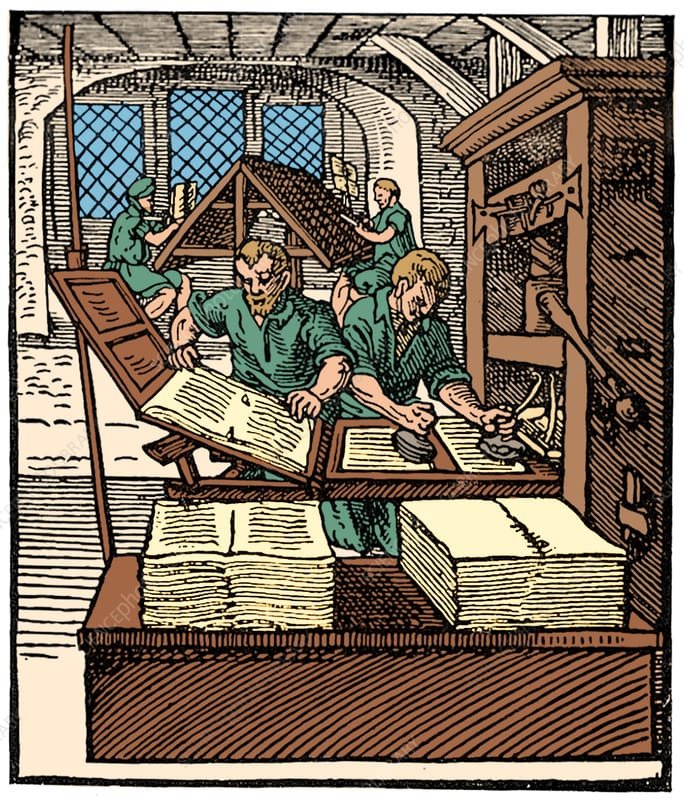
Woodcut of medieval tradesmen working at a 16th-century printing press.
Science or Speculation?
In modern times, scholars have offered natural explanations. The most cited is the phenomenon known as parhelia, or sun dogs: bright spots caused by sunlight passing through ice crystals. These can produce halos, mock suns, and coloured arcs.
Could a complex parhelion display account for what Nuernberger’s saw? Perhaps. But critics point out discrepancies. Parhelia are typically static and symmetrical. The Nuremberg event involved motion, collisions, smoke, and falling objects. Some theorists have suggested an unusual convergence of atmospheric effects, but even that doesn’t fully explain the duration or behaviour of the objects.
Crowd Psychology and Cultural Fear
Others have turned to mass psychology. The people of Nuremberg were not isolated individuals, they shared a worldview steeped in symbolism, divine judgment, and fear. In such a context, ambiguous light phenomena might easily be reinterpreted as cosmic warfare.
This theory suggests no deception, only that collective anxiety shaped perception. A few streaks of light, an unusually shaped halo, a strange mist, and the stage was set for the mind to see battle in the sky.
Carl Jung and Archetypal Projections
In the 20th century, psychoanalyst Carl Jung explored the Nuremberg event in his book Flying Saucers. Rather than dismiss the account, he asked what it revealed about the human psyche. To Jung, the shapes in the sky weren’t just seen, they were projected. He believed people attach deep symbolic meaning to unexplained phenomena.
Jung saw the crosses and spheres as archetypes, expressions of inner fears and hopes externalised in moments of crisis. The “battle” may have been a reflection of Nuremberg’s fractured religious identity, mirroring conflicts below.
UFO Theories: A Battle in the Heavens?
Ufologists have seized on the Nuremberg broadsheet as early evidence of alien activity. Writers like Jacques Vallée note the similarities between 16th-century shapes and modern UFO reports: metallic spheres, tubular craft, aerial manoeuvres.
The notion that two alien factions fought a sky-battle above a Renaissance city might sound far-fetched, but for many in the UFO community, it’s plausible. They argue that misinterpreted technology, filtered through a religious worldview, became “heavenly signs.”
However, this theory lacks direct evidence beyond Glaser’s account. No wreckage, no follow-up sightings, and no corroborating records outside of Nuremberg make it more speculative than factual.
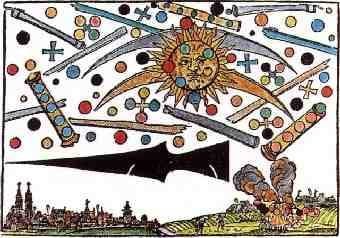
Not an Isolated Incident: Basel, 1566
Five years after the Nuremberg event, another strange aerial display occurred in Basel, Switzerland. Again, dark globes were seen crossing the sky, reportedly clashing with one another. The event was similarly recorded in a broadsheet and interpreted as divine warning.
The recurrence of such stories raises questions. Could regional weather patterns or solar activity be responsible? Or did religious expectation create a template for how people interpreted the heavens?
Echoes Across Time
What lingers most about the Nuremberg event is its ambiguity. It resists simple classification. Too detailed for legend, too strange for science, too orderly for hysteria. It sits uncomfortably between categories.
Its lasting appeal may come from its refusal to conform. Like many so-called “Fortean” events, it forces us to confront our own assumptions. Was it real? Likely. Was it interpreted correctly? That depends on which lens one uses.
More than four hundred years later, the sky battle over Nuremberg continues to haunt the margins of history, not because we understand it, but because we don’t.
Has this article inspired you to visit a paranormal location? Plan and book your visit here.

